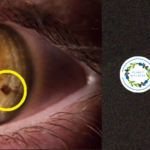What are the 3 most common symptoms of undiagnosed Diabetes?
Diabetes is a chronic health condition that affects millions of people worldwide and is characterised by elevated blood sugar levels. Due to the mild nature of its early symptoms, many people with diabetes do not realise they have the disease, even though it is very common.
It is essential to recognise these signs in order to detect diabetes early and manage it effectively. In an effort to increase awareness of the importance of early detection and appropriate treatment, this article examines the three most common symptoms of undiagnosed diabetes.
Increased Thirst
It is important to detect diabetic symptoms early. Being aware of the common symptoms will help you identify the condition early and take steps to treat it. Increased thirst, or polydipsia as it is known in medical terms, is one of the three most common symptoms of undiagnosed diabetes.
Hyperglycemia, a condition marked by elevated blood glucose levels, is frequently the cause of this symptom. Dehydration results from the kidneys drawing water out of the bloodstream and into the urine in an effort to flush out extra sugar. The body then signals the person to drink more water, which causes an unquenchable thirst.
Some people may experience being excessively thirsty even before they show other symptoms of diabetes, like weight loss or frequent urination. If left untreated, polydipsia—which is frequently one of the first signs of diabetes—can result in other health problems. For this reason, it’s important to identify persistent thirst as a potential symptom of diabetes in order to receive the right diagnosis and treatment.
The intensity and persistence of polydipsia set it apart from ordinary thirst. It could be time to consult a healthcare professional for an in-depth evaluation if you discover that you are drinking far more fluids than usual and that your thirst doesn’t go away even after drinking. Knowing and identifying the early symptoms of diabetes, such as increased thirst, can greatly enhance your chances of successful management and support your continued well-being.
Increased Urination
Polyuria, the medical term for increased urination, is one of the most common symptoms of undiagnosed diabetes. Polyuria occurs when the body generates an excessive amount of urine as a result of elevated blood sugar levels. Diabetes interferes with the body’s ability to control blood sugar, which raises blood glucose levels. Urine production increases as a result of the kidneys filtering and excreting this extra glucose in the urine.
Increased thirst and unexplained weight loss are two more symptoms that can indicate diabetes, especially when combined with increased urination. It’s critical to seek help from a healthcare professional if you notice that you’re urinating more frequently in order to rule out diabetes or any other underlying medical conditions.
Causes of Increased Urination in Diabetes:
Hyperglycemia
The kidneys excrete more water when blood sugar levels are high in order to dilute the blood sugar. This results in increased production of urine and then frequent urination.
Polyuria
The nerves in the bladder and urinary tract can be damaged by high blood sugar, which can impair the bladder’s ability to hold pee. As a result, people could feel the need to urinate urgently more often.
Polydipsia
Another common diabetic symptom is increased thirst, which can result in drinking too much water, thus increasing urination.
Polyphagia
When diabetes is not under control, the body breaks down fat to supply energy, which can result in weight loss. Ketones are released during this process and are excreted in urine, which increases the amount of pee.
Increased Hunger
Polyphagia, the medical term for increased hunger, is one of the most common symptoms of undiagnosed diabetes. The body’s inability to efficiently use glucose, which is the body’s main energy source, results in polyphagia. The body may feel compelled to eat more food as a result to make up for the lack of energy.
Have you tried everything to help control your diabetes and lead a better quality of life?
Do you sometimes wonder, how other people who have diabetes, are able to live a much more fulfilled life? Then our FREE Best Ways to Treat Diabetes Guide is must for you to learn the best proven ways to treat your diabetes.
Causes of Increased Hunger in Diabetes:
Insulin Resistance
When a person has type 2 diabetes, their body develops a resistance to insulin, which is the hormone that regulates blood sugar levels. Consequently, glucose remains in the bloodstream, which increases hunger.
Polyphagia
Elevated blood sugar can damage stomach nerves, compromising the stomach’s ability to signal fullness. An increase in appetite and hunger may result from this.
Hyperglycemia
Dehydration can result from frequent urination brought on by high blood sugar levels. In an attempt to make up for the lost fluid, the body could signal an increase in hunger.
Weight Loss
Because uncontrolled diabetes causes the body to burn fat for energy, it can cause weight loss. As a result, the body may become more hungry in an attempt to obtain more calories.
How Iridology Can Be Used to Detect and Treat Diabetes
The science of reading an iris is called iridology. It’s a holistic method of analysing the iris to understand the body’s health. Iris patterns, colour, and markings can reveal insights about a person’s health, including possible conditions like diabetes.
Understanding Iridology and Its Connection to Diabetes
The foundation of iridology is the theory that certain iris regions correlate to particular systems and organs in the body. For instance, the iris has zones specific to the pancreas and liver. By looking at the iris, Iridologists can identify signs of Diabetes. This involves looking for particular markings or discolourations that could point to an imbalance in the pancreas, which is a major cause of diabetes.
Diagnosis and Early Detection
Iridology can be used by iridologists as an early detection tool for Diabetes. By analysing the iris, they can spot signs of diabetes before other symptoms manifest, which allows for early intervention and management.
Treatment and Management
Iridology is more than just diagnosis; it also includes holistic treatment. People with diabetes can learn more about the right diet, exercise routine, and stress-reduction techniques through iridology, all of which are customised to meet their individual needs. Iridology seeks to assist people in better managing their diabetes by addressing the underlying issues and imbalances.
Conclusion
Diabetes is a chronic health condition, characterised by high blood sugar levels, that impacts millions of people globally. However, because the early symptoms are so subtle, many people are unaware about their condition. This emphasises why it’s important to recognise the signs for early detection and effective management. The three common symptoms of undiagnosed diabetes that have been covered in this article are increased thirst, increased urination, and increased hunger. Recognising these signs can lead to a timely diagnosis and treatment. Additionally, we’ve discussed how Iridology can effectively be used to detect and treat Diabetes.
To learn more about Diabetes, check out our other related blogs:
What Are The 10 Early Warning Signs Of Diabetes?
How To Treat Diabetes Using Iridology
What Are The First Signs Of Diabetes?
Practical Ways To Treat And Prevent Diabetes Naturally
Can Iridology Detect Diabetes?
Check out and order our Amazon Number 1 Bestseller book
The Diabetes Solution : A 28 Day Action Plan For Lowering Blood Sugar Naturally.
NEXT STEP
Book in a complimentary 15 minutes Zoom call with us (valued at £99) to enable us to clarify questions you may have on a specific health concern.






